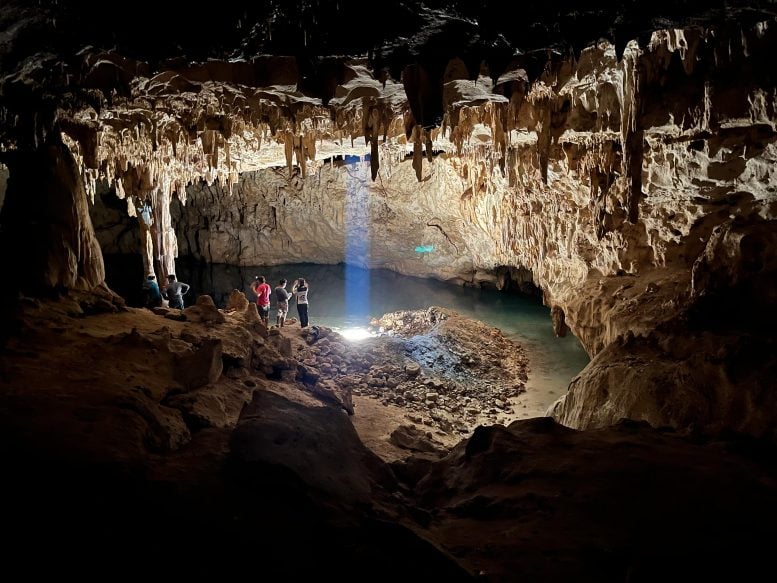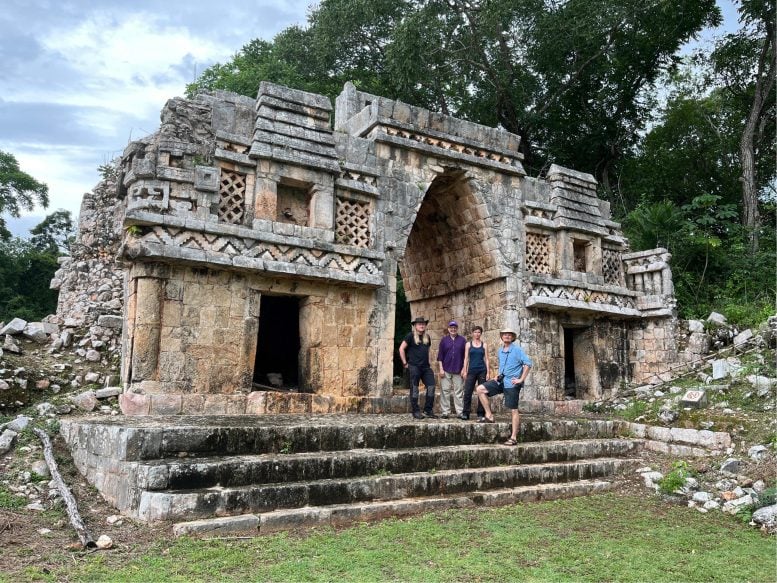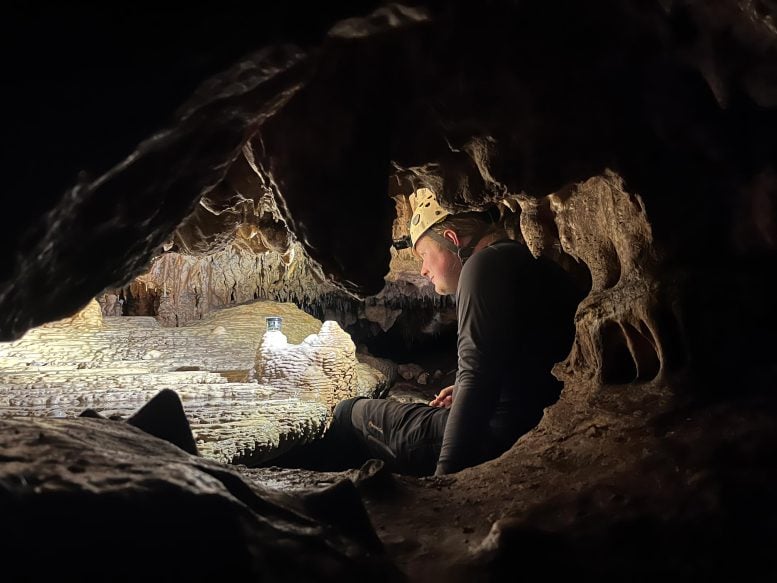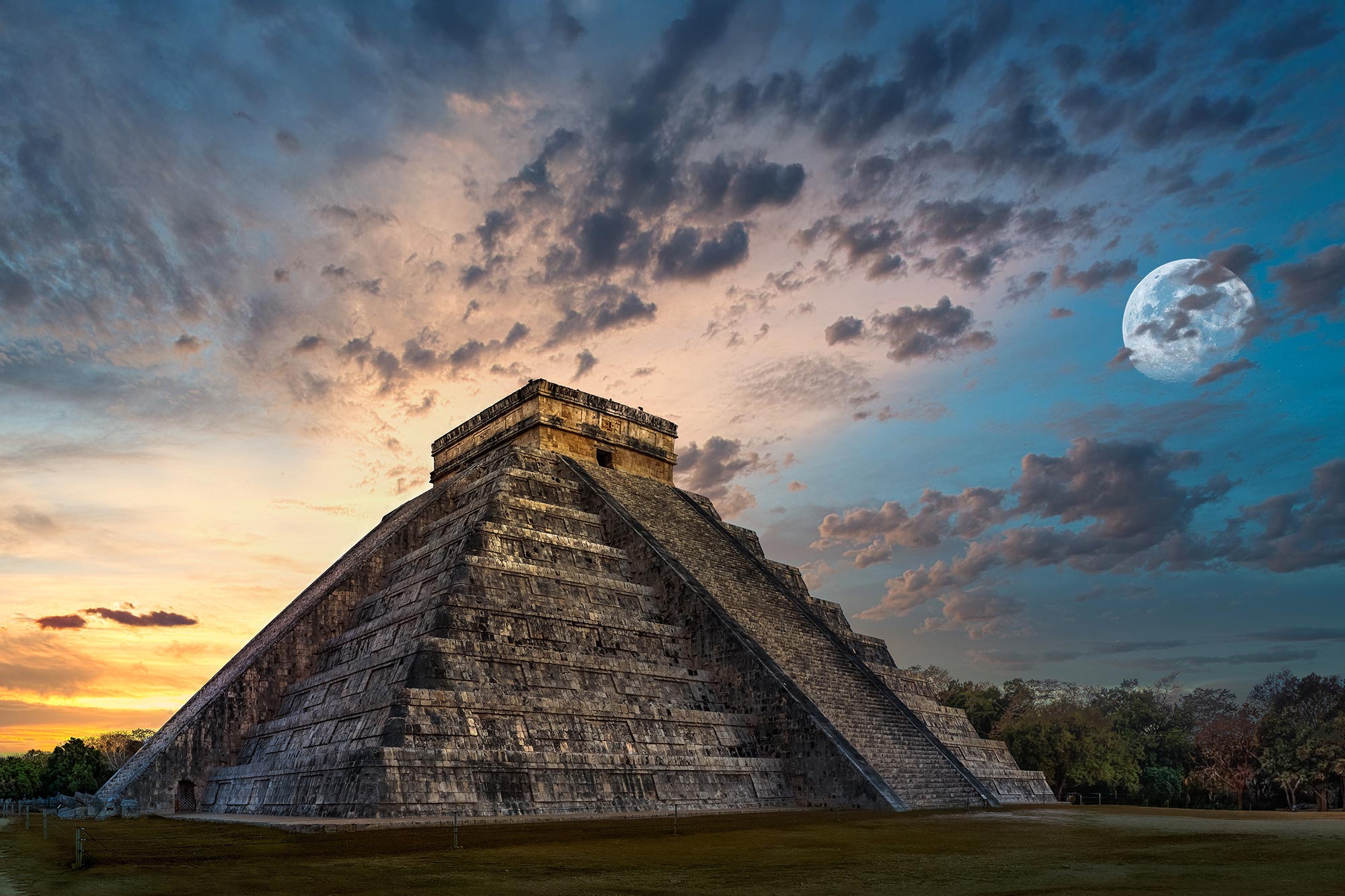Deep inside a Mexican cave, a stalagmite has revealed that the Maya civilization faced repeated droughts so extreme that they may have altered history.
Researchers discovered that wet-season rainfall failed for years at a time, including a staggering 13-year drought, leaving crops at risk and monuments unfinished. These climate shocks align with the collapse of southern Maya cities and the decline of dynasties, offering the clearest evidence yet that climate disaster played a central role in the Maya’s downfall.
Long-Term Droughts and the Maya Collapse
A Mexican cave has preserved evidence of extreme droughts that may have played a central role in the downfall of the Classic Maya civilization. Within one stalagmite, researchers found chemical traces showing a devastating dry period that lasted 13 years, along with several other droughts that each continued for more than three years.
By studying oxygen isotopes in the stalagmite, a team led by the University of Cambridge reconstructed rainfall patterns for individual wet and dry seasons between 871 and 1021 CE. This timespan overlaps with the Terminal Classic, the era of decline often referred to as the Maya collapse. It is the first time scientists have been able to distinguish seasonal rainfall conditions during this critical period.

Abandonment and Decline Across the Region
During the Terminal Classic, southern Maya cities built from limestone were abandoned, dynasties dissolved, and one of the ancient world’s great cultures shifted northward, losing much of its political and economic influence.
The cave record from the Yucatán revealed eight separate droughts that stretched for at least three years each, with the most extreme lasting 13 consecutive years. These findings line up with archaeological evidence showing that monument building and political activity at major northern centers, including Chichén Itzá, came to a halt at various points during this period of climate strain.
A New Framework for Climate–Society Studies
Because these droughts can be dated with exceptional precision, they provide researchers with a powerful new framework for examining the relationship between climate change and human history in the region. The study was published in the journal Science Advances.
“This period in Maya history has been a cause of fascination for centuries,” said lead author Dr Daniel H. James, who conducted the research while a PhD student at Cambridge’s Department of Earth Sciences. “There have been multiple theories as to what caused the collapse, such as changing trade routes, war or severe drought, based on the archaeological evidence the Maya left behind. But in the past few decades, we’ve started to learn quite a lot about what happened to the Maya and why, by combining the archaeological data with quantifiable climate evidence.”

Combining Climate Records with Archaeology
Starting in the 1990s, researchers began to piece together climate records with those left by the Maya, such as the dates they recorded on key monuments, to show that a series of droughts during the Terminal Classic was a likely contributor to the massive socio-political upheaval in Maya society.
Now, James and his co-authors from the UK, US, and Mexico have used the chemical fingerprints contained in stalagmites from a cave in the northern Yucatán to bring those droughts into much sharper focus.
Extracting Climate Signals from Cave Formations
Stalagmites form when water drips from the ceiling of a cave, and the minerals contained in the water grow into large deposits on the cave floor. By dating and analyzing the layers of oxygen isotopes within the stalagmite, the researchers extracted highly detailed information about the climate in the Terminal Classic period. Earlier research has measured the oxygen isotopes contained in lake sediment to determine the severity of drought, but lake sediment does not contain enough detail to pinpoint climate conditions in any given year at a particular site.
“It hasn’t been possible to directly compare the history of individual Maya sites with what we previously knew about the climate record,” said James, who is now a postdoctoral researcher at University College London (UCL). “Lake sediment is great when you want to look at the big picture, but stalagmites allow us to access the fine-grained detail that we’ve been missing.”

Tracking Wet and Dry Seasons in Detail
Earlier research on stalagmites has determined annual average rainfall amounts during the Terminal Classic, but the Cambridge-led team has now been able to go further, and isolate information from individual wet and dry seasons, thanks to relatively thick (about 1mm) annual layers in the stalagmite used in this study. The specific oxygen isotopes in each layer are a proxy for wet-season drought.
“Knowing the annual average rainfall doesn’t tell you as much as knowing what each individual wet season was like,” said James. “Being able to isolate the wet season allows us to accurately track the duration of wet season drought, which is what determines if crops succeed or fail.”
Droughts Severe Enough to Disrupt Life
According to the information contained in the stalagmite, there were eight wet-season droughts lasting for at least three years between 871 and 1021 CE. The longest drought of the period lasted for 13 years. Even with the water management techniques that the Maya had, a drought that long would have had major impacts on society.
The climate information contained in the stalagmite lines up with the dates inscribed by the Maya on their monuments. In the periods of prolonged and severe drought, date inscription at sites such as Chichén Itzá stopped entirely.

Survival Over Ceremony
“This doesn’t necessarily mean that the Maya abandoned Chichén Itzá during these periods of severe drought, but it’s likely that they had more immediate things to worry about than constructing monuments, such as whether the crops they relied on would succeed or not,” said James.
The researchers say that stalagmites from this and other caves in the region could be vital in putting the puzzle of the Terminal Classic period together.
Future Insights from Cave Records
“In addition to what stalagmites can tell us about this period in Maya history, they might also be able to tell us about the frequency and severity of tropical storms, for instance,” said James. “As a case study for fine-grained comparisons between climate and historical data, it’s exciting being able to apply methods usually associated with the deeper past to relatively recent history.”
Reference: “Classic Maya response to multiyear seasonal droughts in Northwest Yucatán, Mexico” by Daniel H. James, Stacy A. Carolin, Sebastian F. M. Breitenbach, Julie A. Hoggarth, Fernanda Lases-Hernández, Erin A. Endsley, Jason H. Curtis, Christina D. Gallup, Susan Milbrath, John Nicolson, James Rolfe, Ola Kwiecien, Christopher J. Ottley, Alexander A. Iveson, James U. L. Baldini, Mark Brenner, Gideon M. Henderson and David A. Hodell, 13 August 2025, Science Advances.
DOI: 10.1126/sciadv.adw7661
The research was supported in part by the National Geographic Society and the Leverhulme Trust.
Never miss a breakthrough: Join the SciTechDaily newsletter.
